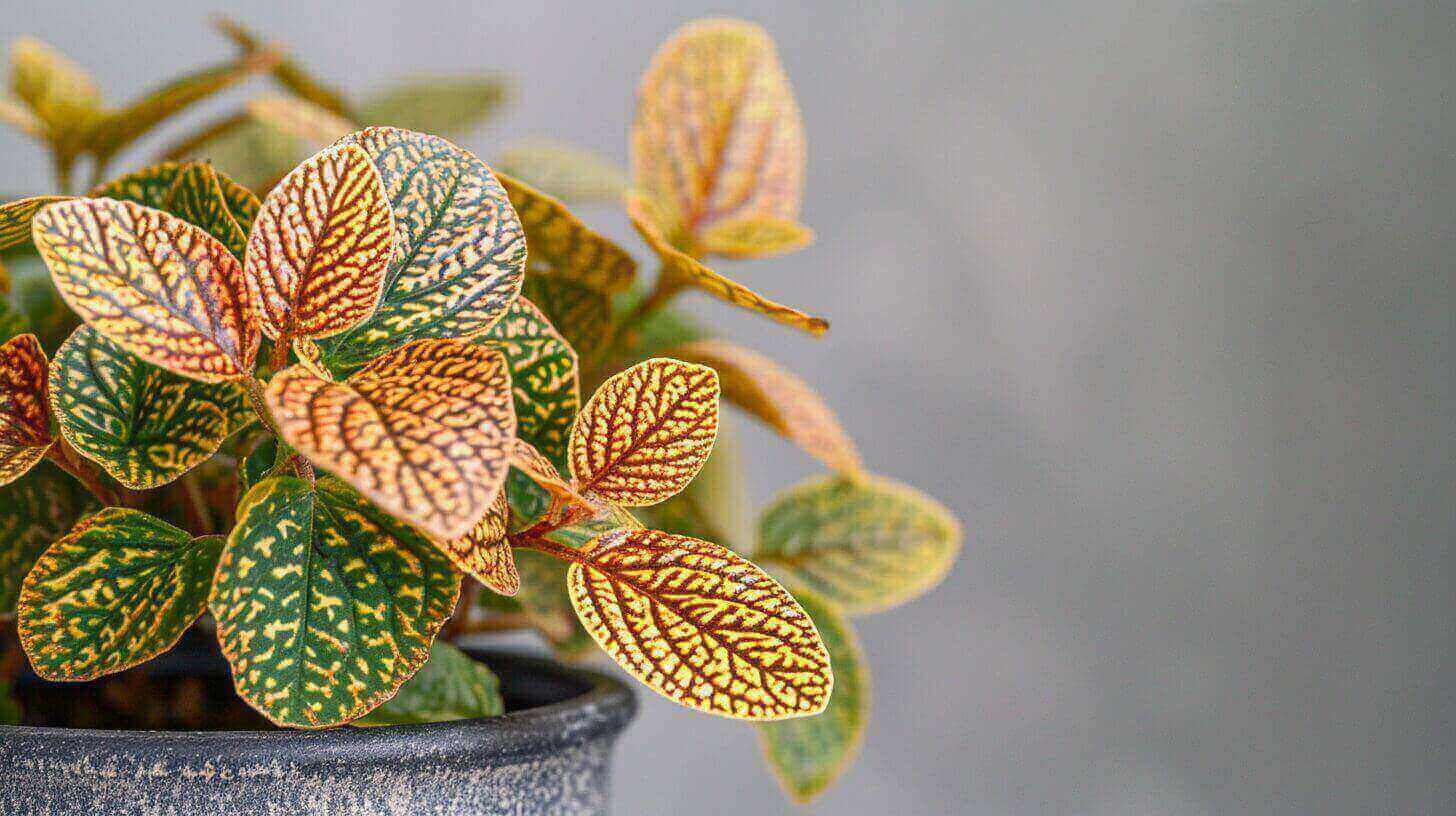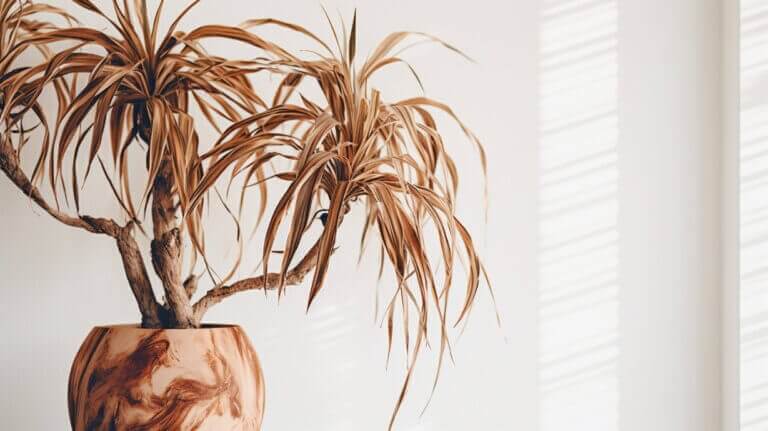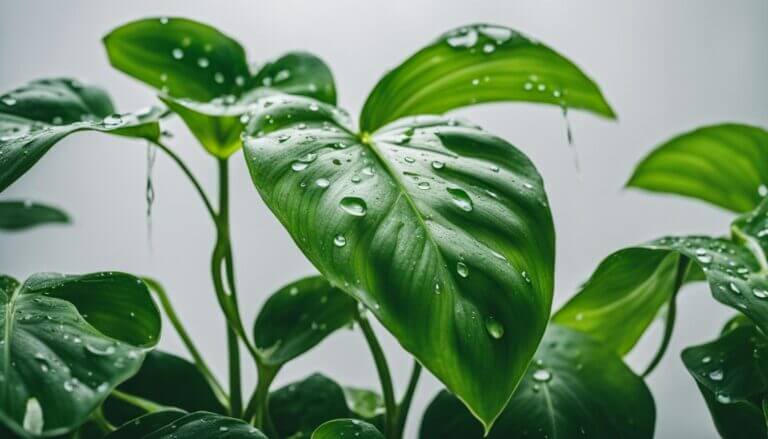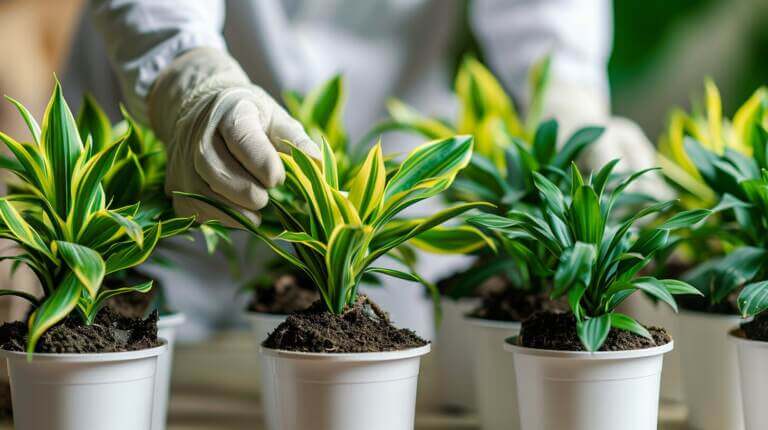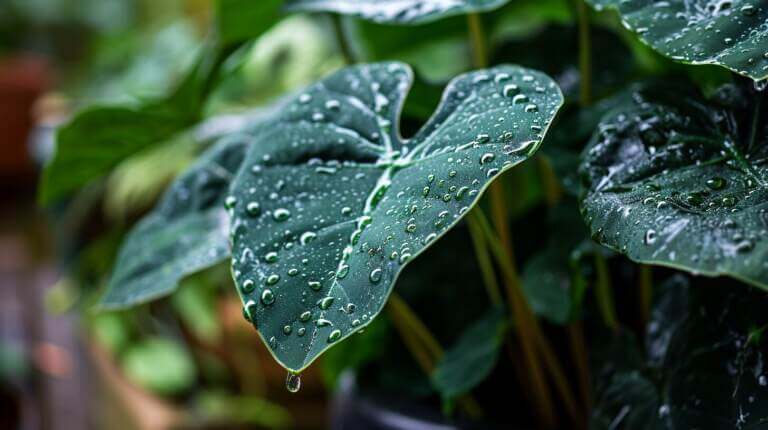How To Fix Yellow Leaves on Fittonia Plant: Common Causes and Treatment For Nerve Plant
If you have a fittonia plant, also known as a nerve plant, you may be familiar with its vibrant and colorful leaves. However, if you notice that the leaves are turning yellow, it’s important to address this issue promptly. Yellowing leaves can be a sign of various problems, including moisture stress, nutrient deficiencies, inadequate light, or even pest infestation. In this article, I will guide you through the common causes of yellow leaves on fittonias and provide you with effective treatments to restore your plant’s health.
Key Takeaways:
- Yellowing leaves on fittonias can indicate moisture stress, nutrient deficiencies, inadequate light, or pest infestation.
- To fix yellow leaves, ensure proper watering, provide balanced fertilization, adjust light conditions, maintain the right soil pH, and address pest problems.
- Check the soil moisture regularly and establish a watering schedule to prevent under or overwatering.
- Use a balanced fertilizer to address nutrient deficiencies, but avoid over-fertilization.
- Place your fittonia plant in bright, indirect light and avoid direct sunlight or overexposure to light.
- Identify and treat pest infestations using natural pesticides or soapy water.
Lack of Water: A Common Cause of Yellow Leaves on Fittonia Plant
If you’ve noticed that the leaves of your fittonia plant are turning yellow, one of the most common causes could be a lack of water. Fittonias are moisture-loving plants, and when they don’t receive enough water, their leaves can become droopy and eventually turn yellow. To ensure your fittonia is properly hydrated, it’s important to establish a regular watering schedule.
Check the soil with your finger to determine if it’s dry before watering your fittonia. Water your plant every 3-4 days, allowing the soil to dry out between each watering session. This will help prevent overwatering and ensure that the roots have a chance to take in oxygen. During the winter months, reduce the frequency of watering to once every two weeks since plants tend to require less water in cooler temperatures.
It’s crucial to use a well-draining soil mixture for your fittonia to avoid overwatering and root rot. If you suspect overwatering problems, consider repotting your plant into a well-draining soil mixture. This will allow excess water to drain away, preventing waterlogged soil and yellowing leaves.
| Watering Tips: | Signs of Overwatering: |
|---|---|
| – Check soil moisture before watering | – Yellowing leaves |
| – Water every 3-4 days | – Wilting or drooping leaves |
| – Allow soil to dry out between waterings | – Moldy or foul-smelling soil |
| – Reduce frequency of watering during winter | – Root rot |
Nutrient Deficiencies: Yellowing Leaves Due to Lack of Essential Nutrients on Nerve Plant
One of the common causes of yellow leaves on fittonia plants is nutrient deficiencies. When fittonias lack essential nutrients like nitrogen, potassium, magnesium, and iron, their leaves can turn yellow due to a condition called chlorosis. Chlorosis is characterized by yellowing of the leaves around the veins, while the veins themselves remain green.
To address nutrient deficiencies in your fittonia plant and prevent yellow leaves, it is important to provide the necessary nutrients through proper fertilization. Using a balanced fertilizer or a traditional fertilizer enriched with nitrogen, potassium, magnesium, and iron can help correct the deficiencies and promote healthier foliage. However, it is crucial to maintain a balance and avoid over-fertilization, as excessive nutrients can hinder nutrient absorption and cause further issues.
| Nutrient | Role | Deficiency Symptoms |
|---|---|---|
| Nitrogen | Essential for growth and leaf development | Yellowing leaves, stunted growth |
| Potassium | Aids in overall plant health and proper water balance | Yellowing edges, brown spots on leaves |
| Magnesium | Required for chlorophyll production | Interveinal yellowing, leaf curling |
| Iron | Crucial for chlorophyll synthesis and energy production | Yellowing leaves with green veins |
Regular soil testing is recommended to ensure that the fittonia plant’s soil pH levels are optimal for nutrient availability. By addressing nutrient deficiencies and providing the necessary elements, you can help your fittonia regain its vibrant green foliage and thrive in your indoor space.
Inadequate Light: Yellow Leaves Due to Insufficient Light Exposure
Fittonia plants require adequate light for proper growth and leaf coloration. Insufficient light exposure can lead to yellowing leaves and overall poor plant health. It’s essential to understand the light requirements of fittonias to ensure their optimal care.
Fittonia plants thrive in bright indirect light. This means placing them near a north- or east-facing window where they can receive bright, indirect sunlight. Direct sunlight exposure can cause the leaves to overheat and burn, resulting in yellowing and damage. It’s crucial to avoid placing your fittonia plant in direct sunlight.
On the other hand, overexposure to light can also be harmful. If your fittonia is placed near a particularly bright window or receives intense light for an extended period, it can lead to stress and yellowing leaves. To prevent this, it’s recommended to keep your fittonia at a distance from windows or use sheer curtains to filter the light.
Filtered light is another suitable option for fittonias. Placing them in areas where the light is partially obstructed, such as under the shade of other plants or using a sheer curtain, can provide the ideal lighting conditions. Finding the right balance of light for your fittonia plant is crucial to maintain its vibrant foliage and prevent yellowing leaves.
Table: Light Requirements for Fittonia Plants
| Lighting Condition | Suitable | Not Suitable |
|---|---|---|
| Bright Indirect Light | ✓ | |
| Direct Sunlight | ✗ | |
| Overexposure to Light | ✗ | |
| Filtered Light | ✓ |
Pests and Diseases: Identifying and Treating Pest Infestation
Pest infestations can be a major cause of yellow leaves on fittonia plants. Common pests that can affect fittonias include aphids, whiteflies, scaly bugs, spider mites, and thrips. These pests can cause yellow spots on the leaves and can often be seen on the plant.
To treat pest infestations, it’s important to act promptly. Using natural pesticides like neem oil can be effective in controlling these pests. A simple solution of dish soap and water can also be used as a natural pesticide. Regularly inspect your fittonia plant for signs of pests and take immediate action to prevent further damage.
Pruning affected leaves is another important step in controlling pest populations. Thoroughly cleaning the plant can also help remove any pests hiding on the surface. By addressing pest problems, you can prevent yellowing leaves and promote the overall health of your fittonia plant.
FAQ
Why do fittonia leaves wilt?
Fittonia leaves may wilt if the plant isn’t getting enough water or if it’s exposed to too much direct sunlight. It’s important to keep the plant in a location with indirect light and to water it regularly.
What causes fittonia leaves to turn yellow?
Yellow leaves on a fittonia plant can be a sign of overwatering. If the plant gets too much water, the roots can become waterlogged and oxygen-starved, causing the leaves to turn yellow.
How do I care for a nerve plant?
Nerve plant care involves providing the plant with a warm, humid environment, as this tropical plant prefers these conditions. Water the plant regularly, but make sure not to overwater. The plant also needs indirect light.
How do I treat a nerve plant with yellow leaves?
If the leaves on your nerve plant are turning yellow, it might be a sign that the plant is getting too much water. Cut back on watering and make sure the plant is in a well-draining pot. If the problem persists, you may need to repot the plant into fresh soil.
What are some common pests that affect fittonia plants?
Common pests that can affect fittonia plants include aphids, spider mites, and mealybugs. If you notice small bugs on your plant or a sticky residue on the leaves, your plant may be infected. Treat the plant with an insecticidal soap or neem oil.

